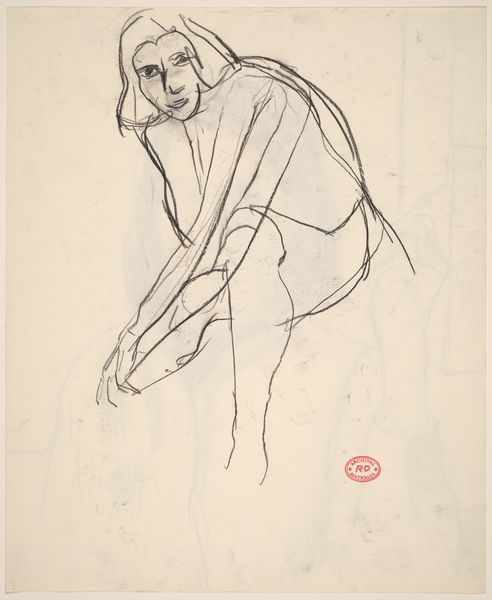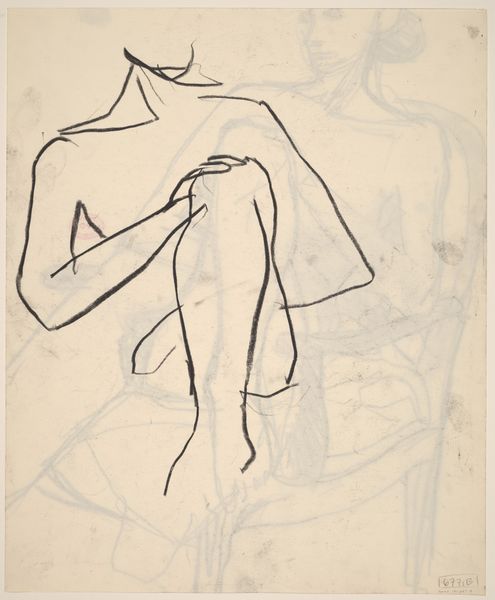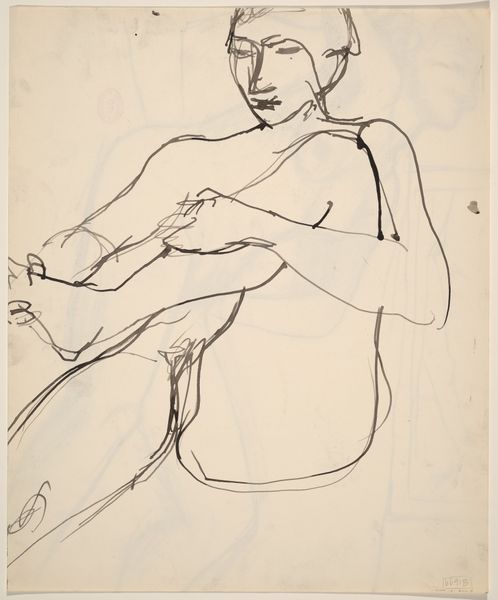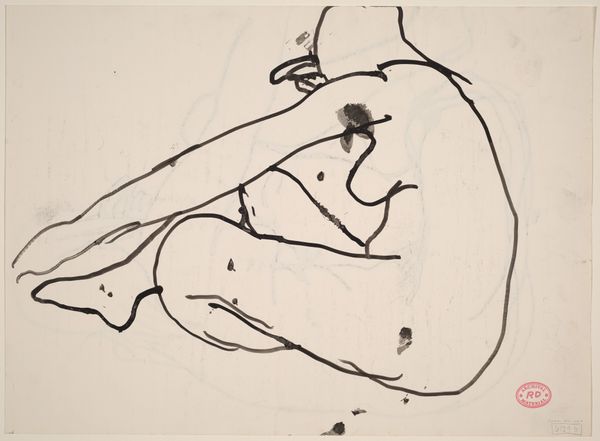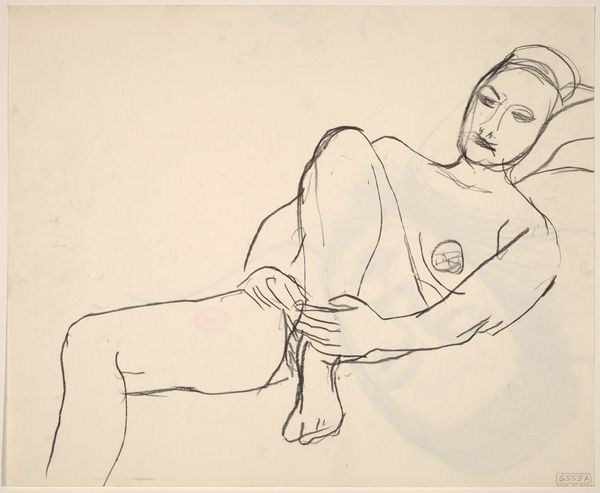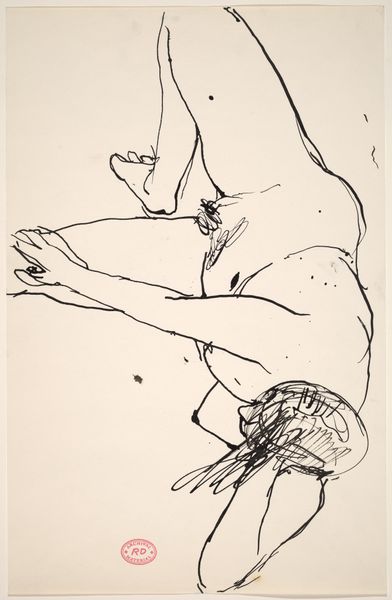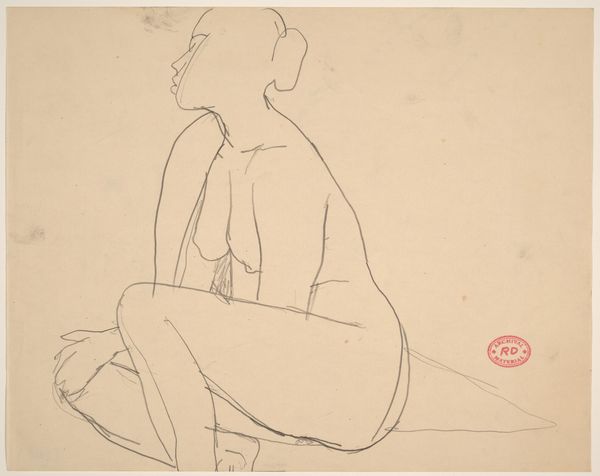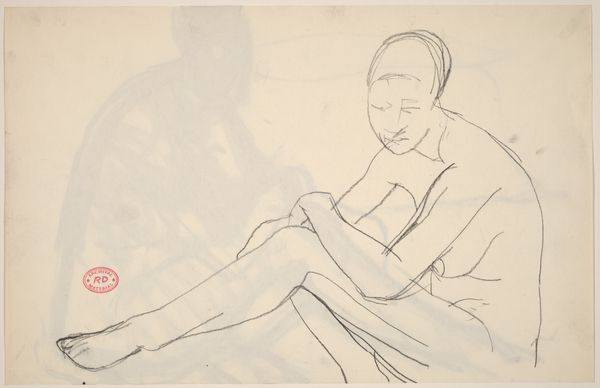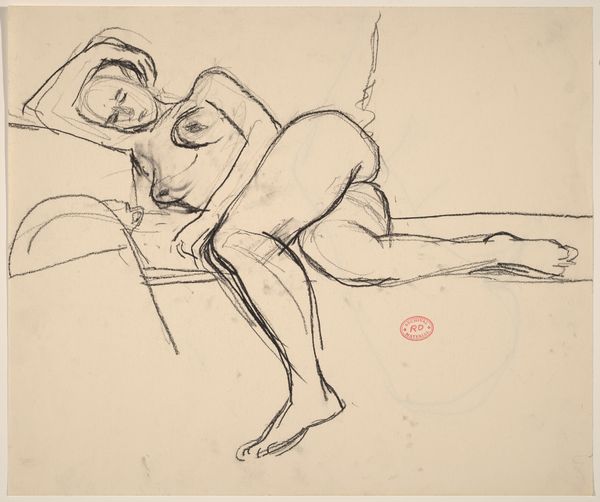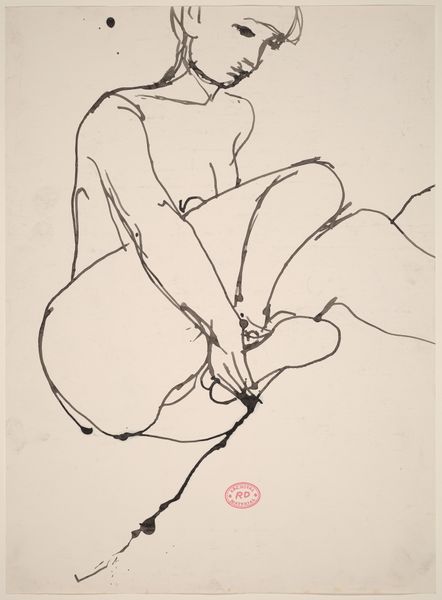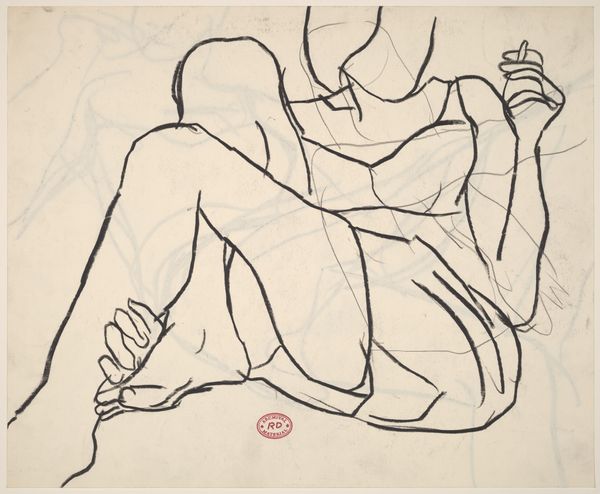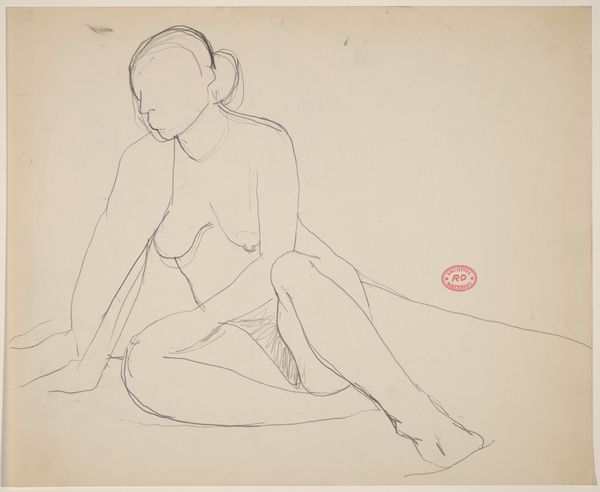![Untitled [seated female nude facing right] [verso] by Richard Diebenkorn](/_next/image?url=https%3A%2F%2Fd2w8kbdekdi1gv.cloudfront.net%2FeyJidWNrZXQiOiAiYXJ0ZXJhLWltYWdlcy1idWNrZXQiLCAia2V5IjogImFydHdvcmtzL2ZjZjU5ODM4LTE5NTAtNDBlNi1iMGZjLTUyMjk1YjQxNjFhOS9mY2Y1OTgzOC0xOTUwLTQwZTYtYjBmYy01MjI5NWI0MTYxYTlfZnVsbC5qcGciLCAiZWRpdHMiOiB7InJlc2l6ZSI6IHsid2lkdGgiOiAxOTIwLCAiaGVpZ2h0IjogMTkyMCwgImZpdCI6ICJpbnNpZGUifX19&w=3840&q=75)
Untitled [seated female nude facing right] [verso] 1955 - 1967
0:00
0:00
drawing, pen
#
portrait
#
drawing
#
imaginative character sketch
#
light pencil work
#
ink drawing
#
pen sketch
#
figuration
#
personal sketchbook
#
bay-area-figurative-movement
#
idea generation sketch
#
ink drawing experimentation
#
pen-ink sketch
#
arch
#
line
#
sketchbook drawing
#
pen
#
nude
#
sketchbook art
Dimensions: overall: 27.9 x 21.6 cm (11 x 8 1/2 in.)
Copyright: National Gallery of Art: CC0 1.0
Curator: Looking at this brisk pen sketch, one can really feel Diebenkorn’s exploration of form and line in his figuration. It is identified as *Untitled [seated female nude facing right] [verso]*, and it dates from the period of 1955 to 1967. Editor: There’s an almost brutal simplicity to it, isn't there? Raw, exposed… I feel like I've just barged into someone's very private moment, like stumbling upon a half-remembered dream. Curator: The “verso” in the title is an important cue; these figures are generally considered studies found on the back of other drawings. Such working sketches were functional forerunners in the creative process. Editor: Exactly! The confidence of the heavy lines… it's like he's stripping away all the polite fluff to get to the essence of the figure. She feels both vulnerable and strong. Like she couldn’t care less if we're looking or not. It’s unnerving. Curator: Right, and it makes you wonder about the role of these works on paper in the cultural politics of the time, and in what manner his nudes were being engaged. In some ways, these drawings allow us to see an image existing adjacent to the artist’s Ocean Park series. Editor: And the ghost of a figure in the background! Another body barely hinted at, fading in and out, or simply abandoned. This lone figure sits waiting for a new story to be created by those stark heavy lines, it leaves so much for my own imagination to discover. Curator: Seeing these working sketches displayed, it becomes easier for us to grasp what we have been conditioned to deem “art” and “artifact,” since this helps shed light on the role of artistic choices within both historical and contemporary settings. Editor: Beautifully said. For me, I'm mostly glad it exists! It’s a gift when artists reveal the messy, human side of their process. Curator: I wholeheartedly agree. It helps remind us of the vital role drawings play as the groundwork of cultural change.
Comments
No comments
Be the first to comment and join the conversation on the ultimate creative platform.
